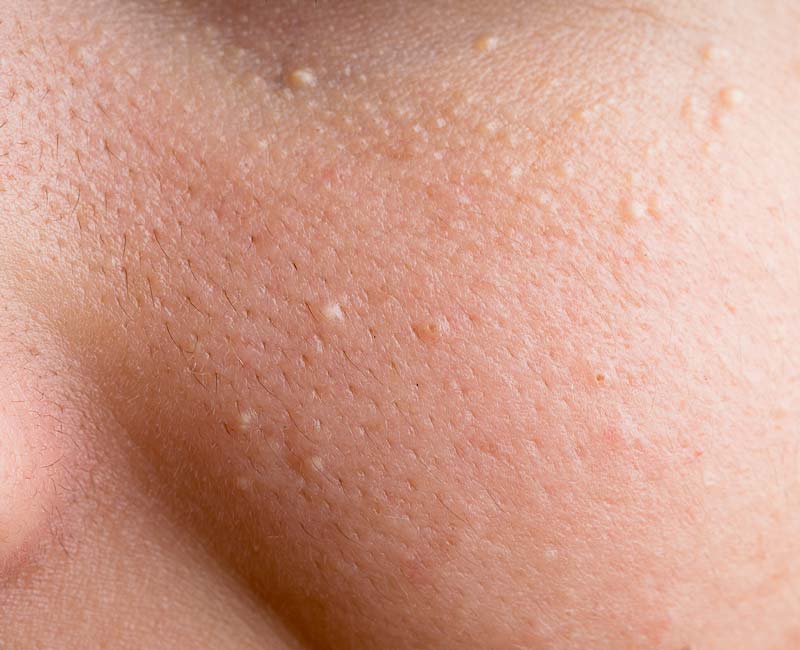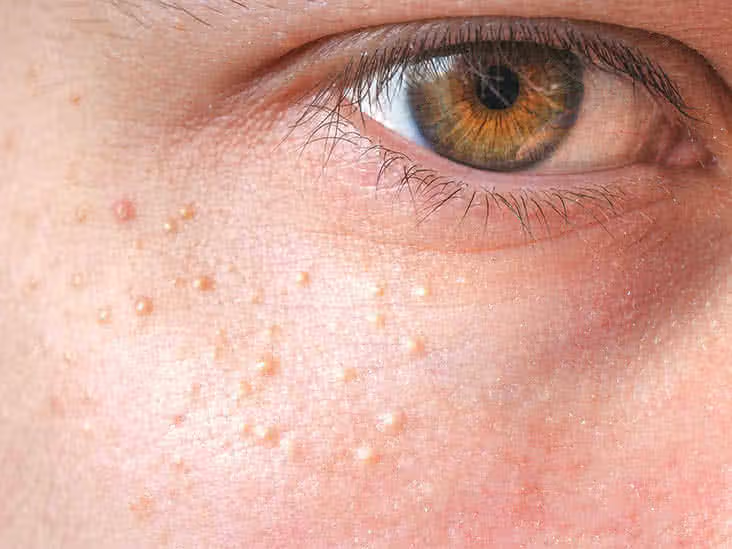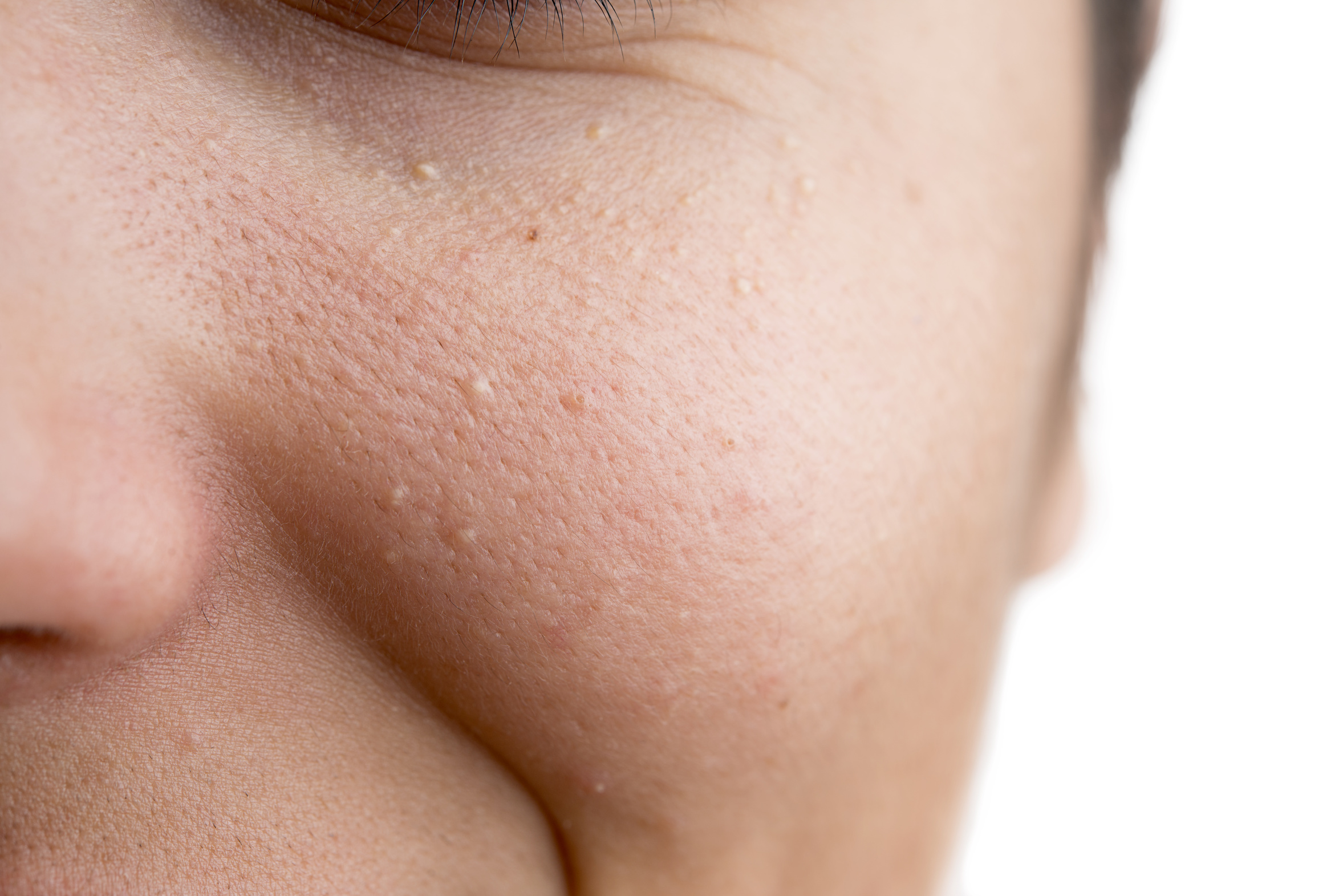
Milia Removal Treatment in Manchester
Milia are small, raised, pearly-white or yellowish bumps on the skin. They are a type of tiny cyst filled with the protein keratin.

WHAT ARE MILIA?
Milia are small, raised, pearly-white or yellowish bumps on the skin. They are a type of tiny cyst filled with the protein keratin.
Milia are most often seen on the skin around the cheeks, nose, eyes and eyelids, forehead and chest but they can occur anywhere on the body. Milia are very common in newborn babies but can affect people of any age. In babies, milia clear by themselves and no treatment is needed. In adults they may take longer to clear and, in persistent cases, treatment may be required.
Milia do not usually cause any symptoms but they can become itchy and some people find them unsightly.
There are the following different types of milia:
Primary milia – these are the most common type of milia that can occur in both children and adults.
Secondary milia – these are milia that develop in an area of skin, anywhere on the body, that has previously been damaged or injured, for example, after a burn or a blistering rash. The milia develop as the skin heals and it is thought that damage to the sweat glands may be an underlying cause. Secondary milia also sometimes develop after certain skin creams have been used.
Milia en plaque – milia of this type are rare. The milia develop on an inflamed, raised patch of skin known as a plaque which may be several centimetres across. The cause of milia en plaque is not fully understood. It usually occurs behind the ears, on an eyelid, or on the cheeks or jaw area. This type of milia tends to particularly affect middle-aged women.
Multiple eruptive milia – these are crops or patches of milia that develop over a period of weeks or months. The crops usually appear on the face, the upper arms and the upper trunk. Milia of this type are rare.
1.
ENQUIRE
Call, message, or pop in at our clinic and speak to our welcoming team.
2.
CONSULTATION
Attend a consultation to see which treatment is right for you.
3.
APPOINTMENT
Sit back and relax in the care of our skincare professionals.
4.
AFTERCARE
Get the best results from your treatment with our aftercare solutions.
HOW CAN THEY BE TREATED?
Milia has often been treated using skin exfoliation, dermabrasion, facials and mild chemical peels. However, these treatments do not offer long-term effects and, if performed incorrectly, can irritate the skin. They are now being more commonly treated using a hyfrecator which works by using electricity to quickly dehydrate the milia, causing them to fall off within a few days.
The hyfrecator has been used for several decades for the removal of milia, and our hyfrecator has been approved by the US Food and Drug Administration (FDA), deeming it safe and effective for aesthetic treatment.
The hyfrecator functions by sending electrical impulses into the body with the use of a probe. It emits an alternating current (AC) that is low in power but at a high frequency. Using the ‘dessication’ approach, the tip of the probe is used to heat a small area of the skin to a temperature that is too high for the tissue to tolerate. As a result of this heating, the treated tissue dies, then the body’s natural processes take over, completing the healing cycle.
The precision of the hyfrecator tip makes it possible for the practitioner to be very exact when it comes to addressing tissue that needs to be removed. For small lesions, there will either be no need for anaesthesia or only a topical numbing cream will be required.
FEEL CONFIDENT IN YOUR SKIN
Our skin clinic specialises in a range of treatable conditions, from acne to wrinkles, and everything in between.

Frequently Asked Questions
How Many Treatments Will I Need?
The number of treatments required will depend on the severity and number of milia. On average, patients will need between one and three treatments. A full treatment plan will be discussed with the nurse practitioner at consultation.
Will It Hurt?
The hyfrecator treatment does not hurt. In some cases an anaesthetic cream or injection may be used to numb the treatment area.
When Will I See the Results?
Results will be visible several days after the initial treatment. Patients may require repeated treatments to achieve their desired results.


 Menu Item
Menu Item